Feeling sluggish, bloated, or just a little off? Your gut might be trying to tell you something—and fermented foods could be the missing link. Packed with probiotics, enzymes, and beneficial bacteria, these tangy, time-tested staples do more than add zing to your meals—they help your digestive system thrive. From fizzy kombucha to crunchy kimchi, fermented foods have been cherished across cultures for centuries, and modern science is finally catching up. If you’re ready to give your gut some love and upgrade your overall health in the process, these 10 flavorful fermented foods deserve a front-row spot on your plate.
1. Apple Cider Vinegar
The golden elixir sitting in your pantry might be your digestive system’s best friend. Made from fermented apples, apple cider vinegar contains ‘the mother’ – a colony of beneficial bacteria that forms during fermentation.
This tangy liquid helps increase stomach acid, making it easier to break down food and absorb nutrients. Many people take a tablespoon before meals to kickstart digestion.
For best results, look for raw, unfiltered versions with the cloudy mother intact. Mix it with water or drizzle it over salads – your gut will thank you!
2. Kefir
Imagine yogurt, but in a pourable, drinkable form – that’s kefir! This tangy fermented milk beverage originated in the Caucasus Mountains and packs a serious probiotic punch with over 30 strains of beneficial bacteria and yeasts.
Unlike yogurt with just a few bacterial strains, kefir’s diverse microbial community works together to transform milk into a digestive superfood. The tiny organisms help break down lactose, making it easier for even some lactose-intolerant folks to enjoy.
A daily glass of kefir can help restore gut balance, boost immunity, and improve overall digestive comfort.
3. Traditional Yogurt
Creamy, versatile, and beloved worldwide, traditional yogurt stands as perhaps the most accessible fermented food in Western diets. The magic happens when friendly bacteria like Lactobacillus bulgaricus and Streptococcus thermophilus transform milk into this tangy delight.
These beneficial microbes continue working their magic in your digestive tract, helping break down food and creating an environment where good bacteria thrive.
The living cultures in yogurt can help restore balance after antibiotics disrupt your gut. For maximum benefits, choose plain varieties with “live active cultures” on the label and avoid those loaded with sugar.
4. Sauerkraut
Long before vitamins were discovered, sailors carried barrels of sauerkraut on voyages to prevent scurvy. This simple combination of cabbage and salt creates a fermentation environment where beneficial Lactobacillus bacteria thrive, transforming ordinary cabbage into a digestive superfood.
The fermentation process not only preserves the cabbage but also creates a wealth of enzymes that aid digestion. Each tangy forkful delivers fiber that feeds good gut bacteria and helps move things along your digestive tract.
Skip the pasteurized versions and look for refrigerated sauerkraut with live cultures for maximum digestive benefits.
5. Kimchi
Fiery, fragrant, and bursting with flavor, kimchi transforms humble cabbage into a digestive powerhouse through an ancient Korean fermentation art.
Unlike its German cousin sauerkraut, kimchi brings a complex spice profile from garlic, ginger, and chili peppers – ingredients that stimulate digestive juices and enhance gut function. The fermentation process creates billions of beneficial bacteria that help break down food and absorb nutrients.
These microorganisms produce short-chain fatty acids that nourish your gut lining. A small serving with meals can reduce bloating and improve overall digestive comfort while adding a flavor explosion to your plate.
6. Kombucha
What happens when sweet tea meets a strange, mushroom-like culture? Magic in a bottle! Kombucha starts as ordinary tea transformed by SCOBY (Symbiotic Culture Of Bacteria and Yeast) into a fizzy, tangy elixir that’s taken the health world by storm.
During fermentation, the SCOBY consumes most of the sugar, creating beneficial acids and probiotic organisms. These compounds support digestive health by enhancing gut barrier function and feeding beneficial bacteria.
The gentle carbonation can help relieve gas and bloating, while the acids stimulate digestive juices. Start with small amounts if you’re new to kombucha – its powerful effects can surprise first-timers!
7. Tempeh
Born in Indonesia centuries ago, tempeh transforms humble soybeans into a firm, nutty cake through the magic of Rhizopus mold. Unlike highly processed soy products, tempeh’s fermentation creates a whole food that’s easier to digest and more nutritionally available.
The fermentation process breaks down phytic acid and enzyme inhibitors that can make beans hard on your stomach. This predigestion means less work for your gut and fewer digestive issues like gas or bloating.
With a meaty texture that soaks up flavors beautifully, tempeh makes an excellent protein source for plant-based eaters seeking better digestion. Try it marinated and grilled for maximum flavor!
8. Miso
Centuries before scientists understood probiotics, Japanese cooks were stirring miso into soups for its distinctive flavor and health benefits. This humble paste begins as soybeans fermented with koji (a beneficial mold) and salt, transforming through months or even years of aging.
During fermentation, complex proteins break down into easily digestible amino acids while beneficial bacteria multiply. The enzymes in miso help your body break down proteins, fats, and carbohydrates more efficiently.
A daily cup of miso soup can gently stimulate digestion without overwhelming your system. Remember not to boil miso – add it to hot, not boiling, liquid to preserve its living benefits.
9. Natto
Bold, pungent, and utterly unique, natto polarizes taste buds with its strong flavor and spider-web-like strings. These fermented soybeans undergo transformation by Bacillus subtilis bacteria, creating a nutritional powerhouse unlike anything else on your plate.
The sticky biofilm that gives natto its distinctive texture contains enzymes that break down protein and starch, making them easier for your body to use. Many Japanese people eat natto for breakfast, knowing its powerful digestive benefits start working immediately.
Beyond improving digestion, natto contains vitamin K2 and nattokinase, compounds that support heart health and circulation. Start with small amounts if you’re new to this acquired taste!
10. Fermented Pickles
Not all pickles are created equal! The bright green jars lining supermarket shelves usually contain vinegar-brined cucumbers without living cultures. True fermented pickles – made the old-fashioned way with just salt, water, and time – transform through the action of Lactobacillus bacteria.
These beneficial microbes convert cucumber sugars into lactic acid, creating that distinctive tangy flavor while multiplying into billions of gut-friendly probiotics.
The fermentation process also creates enzymes that help break down food. Look for pickles in the refrigerated section that list “live cultures” on the label, or better yet, make your own at home with just cucumbers, salt, water, and patience!
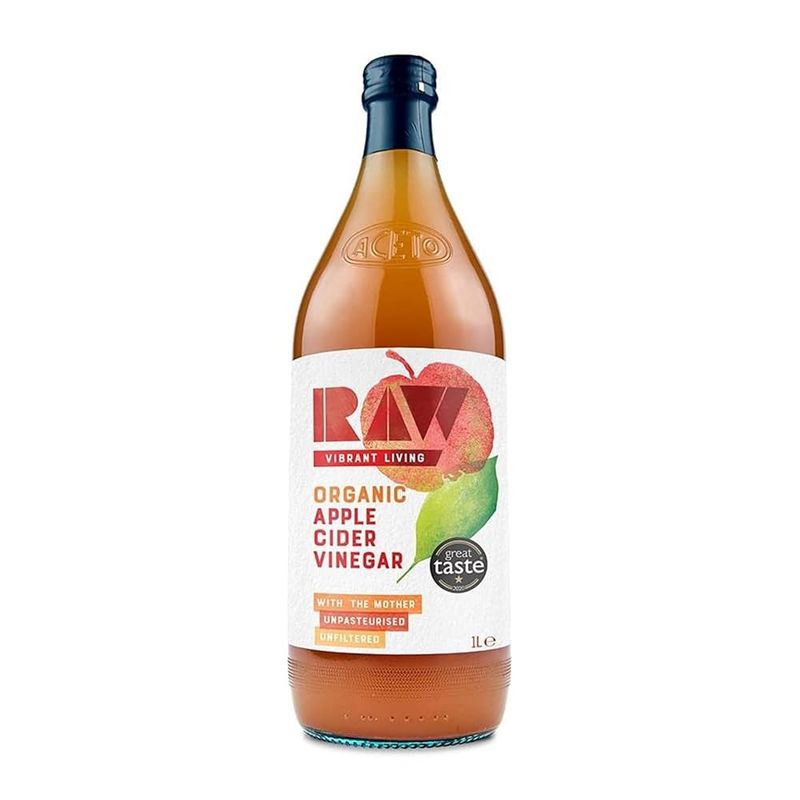
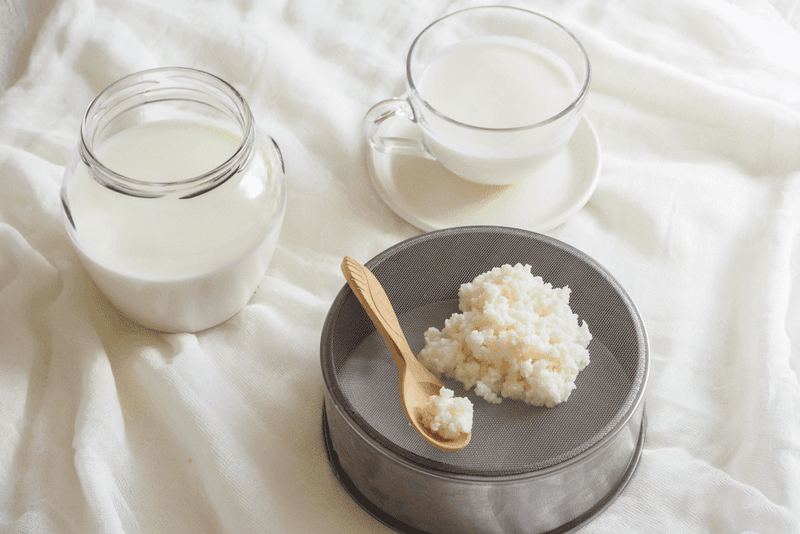
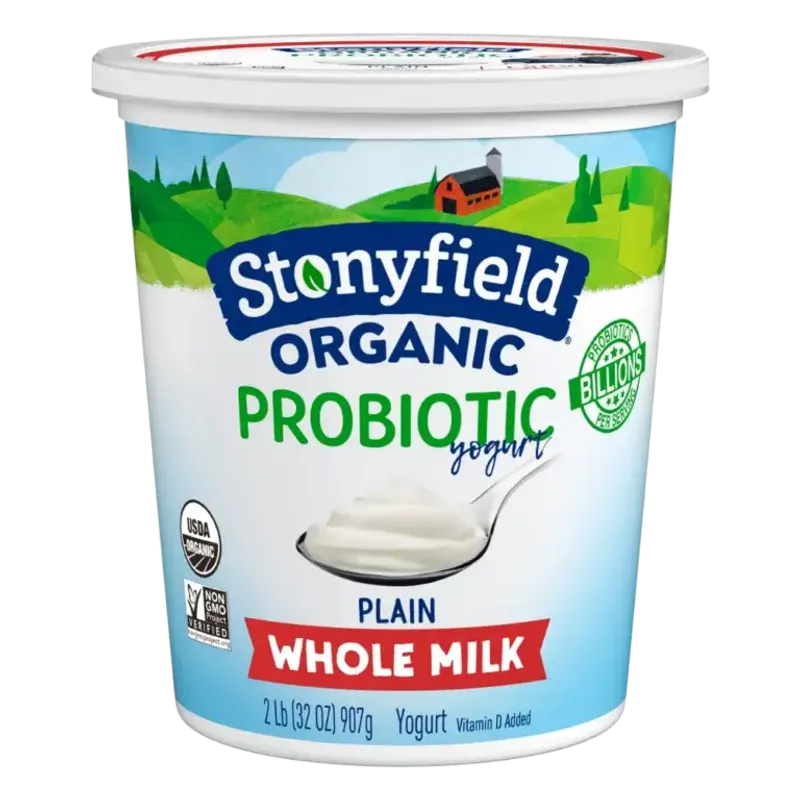
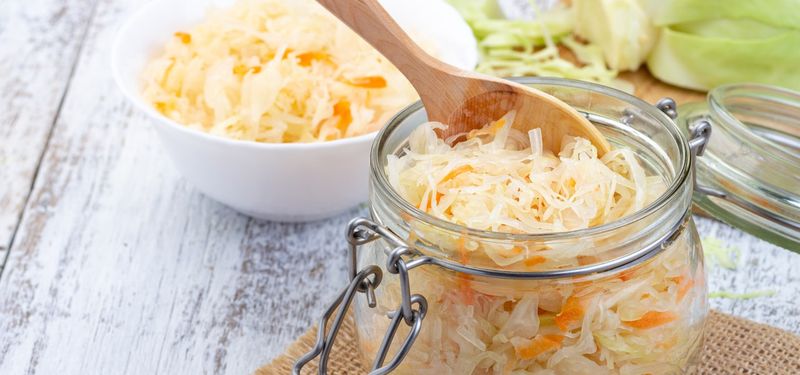
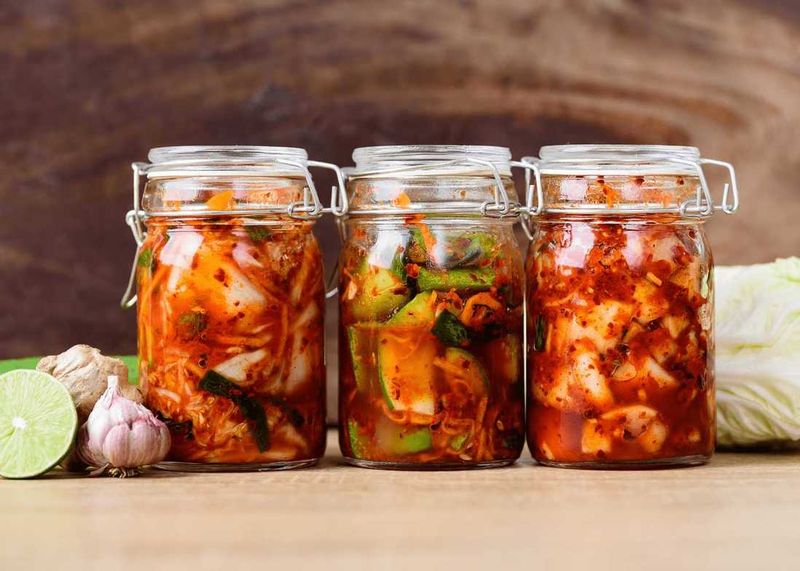
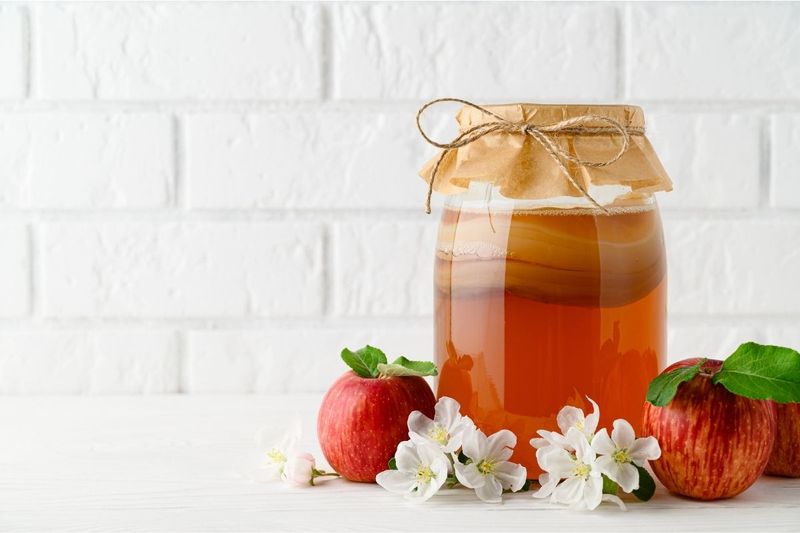

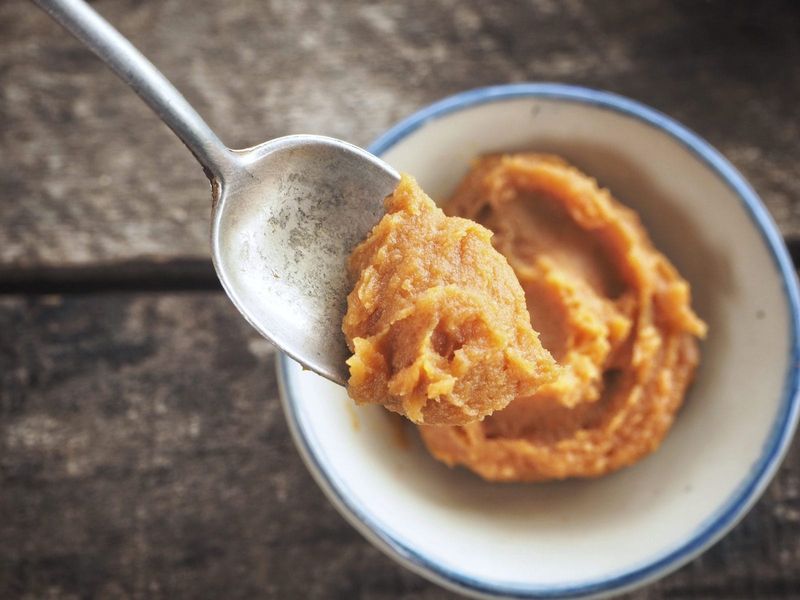
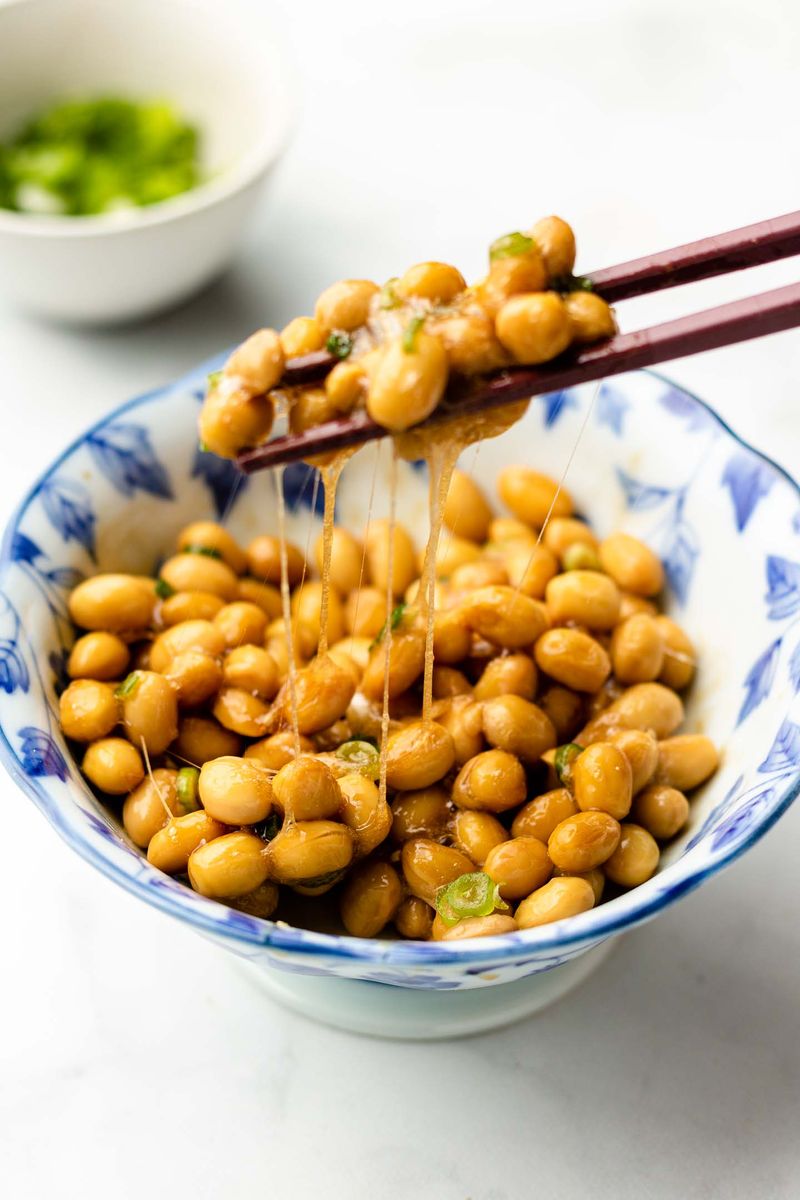
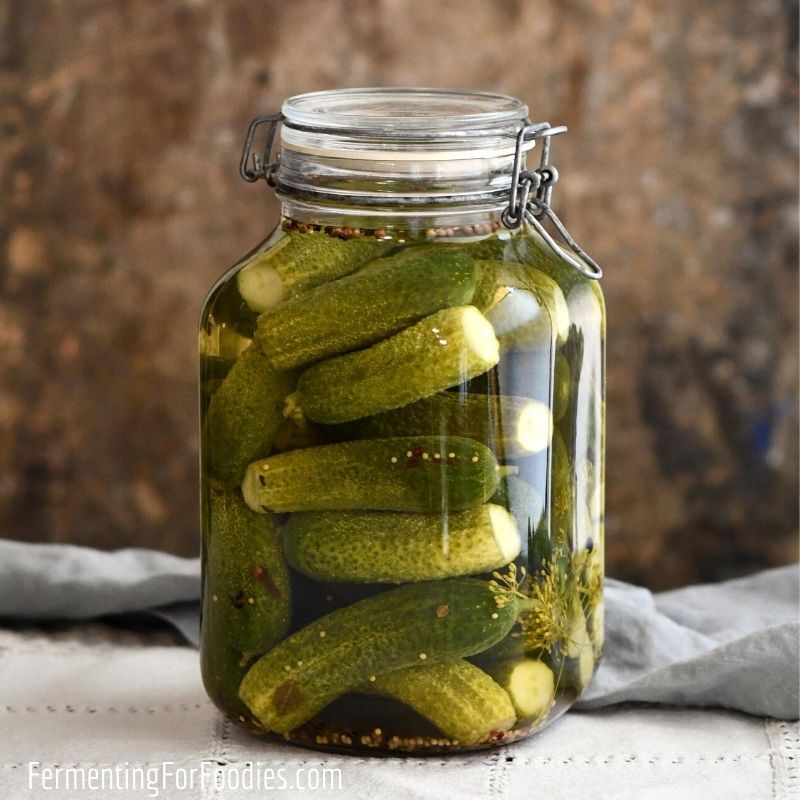
Leave a comment